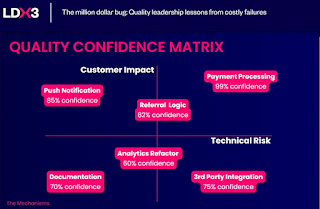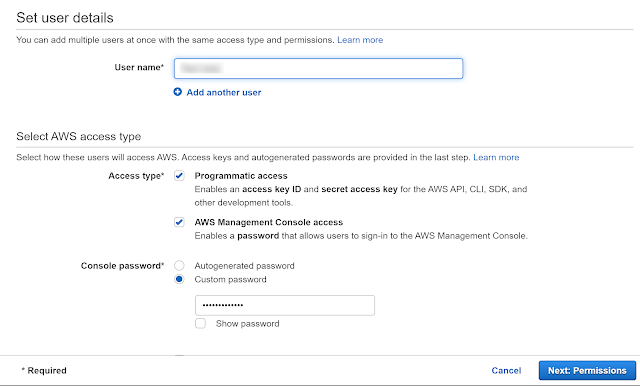I’ve been trying to attend LeadDev for the last three years. I’ve submitted CFPs every time, hoping to be selected as a speaker, but it hasn’t happened yet. I’m not giving up, though; I’ll keep trying. This year, I finally got the chance to attend in person, and it felt special. Big thanks to CFC for making this happen.
As it was my first time attending LeadDev, I wanted to be well-prepared and make the most of the experience. Checked my travel route, laid out my notebook and favourite pen (yes, I still love handwritten notes!). The organisers had an app where I could plan my schedule in advance. That really helped me as it meant I didn’t have to make last-minute decisions during the day and could just focus on being present. I found that really useful.
I spent some time looking up the talks and the speakers ahead of time and built my schedule based on what I was most interested in. The event had three main stages—Ways of Working, Organisational Leadership, and Technical Strategy. There was also a Solutions Stage with vendor demos, community spaces, office hours, and a chance to meet authors. I didn’t manage to attend everything, but I’ll share what I experienced.
🧡 The day started with a lovely catch-up with Christine Pinto. We’ve met before, but it’s always such a joy to connect in person, especially with someone who’s part of the quality community I deeply value.
Day 1 kicked off with the session I attended first: “How to Keep Everyone Happy (on a Shoestring)?” by Neslihan Şirin Saygılı.
Neslihan shared her journey managing teams without formal management training, facing many real-world constraints: limited budget, limited headcount, limited time, limited life and the added pressure when C-level executives want Friday launches. She described these as “dominoes vs avalanches,” highlighting how small issues can cascade into bigger crises if not managed well.
Her approach starts with taking a wide view. She created a “happiness sparse matrix”. She also talked about “rotating priorities” like pizza trade-offs where each sprint prioritises a different team’s needs, with a “time currency” paid upfront(people respected the fairness)
A bigger perspective came from framing the challenge as a “constraint satisfaction problem,” one without a perfect numerical solution but solvable through heuristics and teamwork. She reminded us it’s okay to have “good enough” plans, It's better to be 70% right today than than 100% right too late. Keep the stakeholders informed all the time.
Her practical advice included focusing on root causes, not blaming individuals, and fixo ne thing fully, not 10 things badly. Keep the big picture, don't let the crisis blind you to the others. She encouraged establishing some principles like casual coffee breaks, sharing credit, listening, being accessible, and supporting personal growth through books and side projects to keep the “emotional bank account” topped up.
Quote from Regina Phalange:
“Our experiences are similar in pattern but unique in detail. I believe we need tailored solutions.”
Managing tech crisis on a shoestring isn’t about being a hero, but being a human.
What resonated most with me was how much this isn’t about having all the answers or being perfect. It’s about understanding the real, messy challenges teams face every day and finding practical, human ways to navigate them and you don't have to do it alone, find help!
The next session I attended was “Better Software, Faster” by Laura Tacho.
Laura opened strong with a clear message: “We need to think about using AI on an organisational level to see the organisational benefits.” She quickly made it clear that AI isn’t about producing more lines of code—because we already know lines of code aren’t a meaningful measure. Instead, it’s about improving the developer experience.
She described how many leaders right now are sitting in a “disappointment gap”—expecting AI to replace engineers or bring instant transformation, but the reality doesn’t match the hype. That contrast was summed up with humour: “The milk is actually shaving cream,” which got a good laugh in the room.
This hype around AI is the biggest barrier for adoption. Engineers might even start seeing it as competition, which only builds more resistance. But as Laura pointed out: data beats hype—every time. Leaders need to set realistic expectations about what AI can and can’t do, and be able to explain those clearly to boards, execs, and development teams alike. While AI can be transformative, that’s not what most companies are seeing in their day-to-day work—yet.
Quote from Brian Houck (SPACE framework co-author):
“The hype around AI is in many ways the biggest barrier for adoption.”
She shared stats showing that advanced organisations in the top quartile have about 60% adoption of AI tools on a daily or weekly basis—but there’s still a huge gap between them and the rest. Laura stressed that if you invest the effort and resources into AI adoption, usage will go up. The average reported time savings is already about 3 hours and 45 minutes per developer per week in the first half of 2025.
Still, she was honest about how hard it is to lead in this space right now. The landscape is evolving rapidly, and many leaders feel like they’re constantly guessing. But we’re not alone in that. Laura wants to equip us to show up with clarity and confidence, especially when it comes to separating hype from what’s actually happening.
She reminded us that we have a hard job to do as organisational leaders. Our role and responsibility is to educate around the hype. It’s easy to get distracted by shiny new tools, but when leadership asks “what are we doing with AI?” — we need to have a clear, honest answer. And when we ask “what does it actually take to build better software?” — the answer isn’t just writing code faster. It’s making sure the code is reliable, maintainable, and valuable.
Laura outlined two things we need to do this well:
- A common definition of engineering performance
- Clarity on how AI is influencing that performance
We also need AI-specific measures, not just the usual engineering metrics.
Despite all the newness, she reminded us that the fundamentals of software delivery still hold—collaboration, fast time to market, quality, reliability, and security. AI might help accelerate delivery, but without care, it can also accelerate the wrong things. We need to protect our organisations from delayed damage, like producing more poor-quality code, faster.
One big takeaway for me was around aligning the organisation on a shared definition of excellence. Laura introduced DX Core 4, a framework developed by people like Abi Noda and Dr. Nicole Forsgren (from the DORA team), which has already been used by hundreds of companies. It’s been battle-tested, and it shows that Developer Experience (DX) is one of the biggest levers we have to improve engineering performance.
She shared that around 20% of developer time is lost to friction from inefficient tools and poor internal systems. Since time is such a scarce commodity, mapping DX improvements back to saved time and recovered salary makes a solid business case for investing in better developer experience. Biggest wins for utilisation is going from non-using to using AI. Top metric to track in terms of Impact = time savings per week. AI Measurement Framework = Utilization + Impact + Cost.
As Azra from Block put it:
“These improvements helped us move faster without sacrificing quality or focus.”
Laura wrapped up by debuting an AI Measurement Framework. This session was a real eye-opener. It helped me see how, as leaders, we need to take ownership not just of tools and tech, but of the narrative around them.














